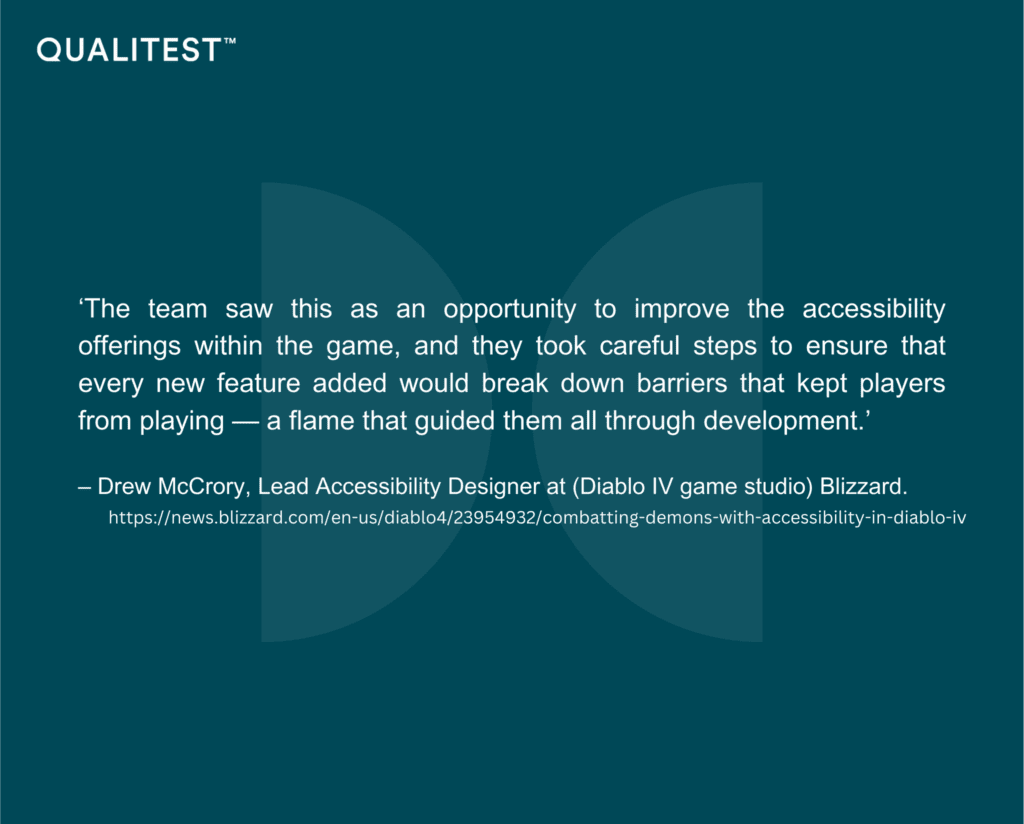Embracing Inclusivity — 5 Accessibility Enablers for Gaming
- Aug 23, 2023
- 4 min


The gaming industry continues to make remarkable strides in delivering immersive and captivating gaming experiences. As technology advances and creativity flourishes, game developers are consistently pushing the boundaries of what’s possible in the virtual world. However, for a game to be universally enjoyed, it’s crucial not to overlook a significant aspect that directly impacts millions of players worldwide: accessibility testing.
Accessibility testing refers to the process of evaluating how well a game caters to players with disabilities or other accessibility needs. It aims to ensure that all players, including those with visual, auditory, motor, or cognitive impairments, can fully enjoy and participate in the gaming experience. This involves examining various aspects of the game, such as user interfaces, controls, subtitles, audio cues, color contrast, and input options.
Inclusivity goes beyond just a moral imperative; it’s also smart business. By embracing accessibility testing, game developers open the doors to a wider audience and improve the overall user experience for everyone. Making games inclusive means accommodating players with different needs and making sure that gaming is an enjoyable and empowering experience for all.
Here are the five enablers of accessibility in game development.
When it comes to the game’s first setup, ensure that accessibility features are available to toggle so people can make their changes. It is important as it makes this inclusivity a top priority but also easy to access. We usually find when it’s available in the first menu, it makes the process easier for all players to choose how they can play. You can see a great example of this in the Diablo IV game where the setup allows players to choose if they enable accessibility first.

One of the critical aspects of accessibility testing is evaluating the user interface (UI). Clear, intuitive menus and navigation are crucial for players with disabilities. Implementing scalable fonts, providing text-to-speech options, and ensuring proper color contrast significantly enhance the accessibility of the UI. Some games have those options available in their menus or by clicking a combination of controls.
Customizable controls, support for alternative input devices, and options to adjust gameplay speed can level the playing field for players with motor impairments. For example, Sony has released a new highly customizable controller called Access which is designed to make gaming more accessible. Xbox has its own Adaptive controller and Japanese manufacturer Hori has a license from Nintendo to produce an accessibility controller which is compatible with both Switch and PC.
Sound plays a vital role in many games, but not all players can fully appreciate it. Accessibility testing includes providing subtitles for dialogue and audio cues, allowing deaf or hard-of-hearing players to follow the storyline and experience the game’s atmosphere. Make sure to have the audio gestures subtitled or replaced with another visual gesture to ensure the player does not miss a thing as part of the gameplay. For example, the on-screen character may be strolling through a town or about to experience a dramatic jumpy scene and that audio cue may need replacing with a visual one.
While automated testing tools are valuable, nothing can replace the insights gained from real user testing. Involving gamers that are persons with disabilities in the testing process provides valuable feedback and helps identify areas that may need improvement. Real user feedback is such a valuable process in making sure the users are being heard and their issues are important.
The games industry holds immense potential to create memorable experiences that resonate with players of all backgrounds and abilities. Embracing accessibility testing is not just a checkbox to tick; it’s a commitment to inclusivity and a step towards making gaming an enriching experience for everyone.
At Qualitest, we can help you make accessibility testing a central pillar of game development and pave the way for a more inclusive and enjoyable gaming future for all players.
